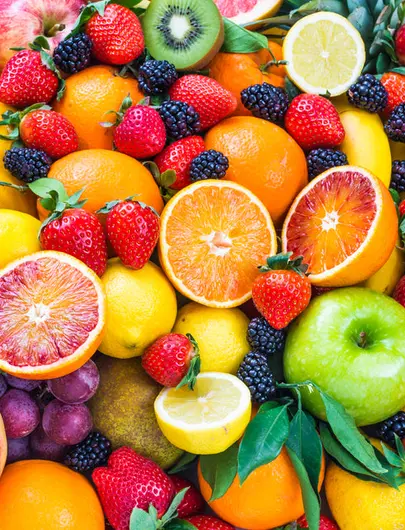Fructose malabsorption is something we’re hearing more and more about…But what exactly is fructose malabsorption, how do you know if you have it, and which foods should be avoided?
First of all, what is fructose?
A short-chain carbohydrate, fructose is a simple sugar that’s small in size. Fructose is present in many fruits, some vegetables and certain liquid sweeteners. It’s also found in wheat in the form of fructose chains called ‘fructans’.
What is fructose malabsorption?
While the other simple sugars, glucose and sucrose, have no problems being absorbed in the small intestine, fructose, when consumed in a higher ratio to glucose can cause a couple of issues:
- In some of us, and particularly individuals with IBS who have gut hypersensitivity, fructose can’t be absorbed in the small intestine. This can lead to osmosis in the gut, where excess water travels through the bowel – a recipe for diarrhoea, or in some, constipation (or a combination of the two).
- Because fructose is a FODMAP, i.e., a fermentable carbohydrate, it can leave some of us feeling gassy and bloated, often with accompanying nausea and/or a gut ache.
How is fructose malabsorption diagnosed?
A hydrogen or methane breath test can determine fructose that hasn’t been absorbed.
Alternatively, an elimination diet can be helpful in determining whether fructose is causing gut distress; the low FODMAP diet eliminates all kinds of fermentable carbohydrates, enabling you to pinpoint which one (or ones) in particular is the potential problem.
Speak to your healthcare practitioner for more information and professional guidance; we do not advocate self-diagnosis.
Which foods are high in fructose?
Common high fructose foods contain fructose in excess of glucose, and include:
- Cherries
- Figs
- Mango
- Apples
- Pears
- Watermelon
- Dried fruit
- Asparagus
- Globe artichoke
- Savoy cabbage
- Several liquid sweeteners: Honey, agave and high fructose corn syrup
- Wheat bread
- Wheat-based cereals (like bran and wheat biscuits) and muesli bars
Can you eat any fruit if you have fructose malabsorption?
Individuals with fructose malabsorption can still enjoy a serve or two a day of certain foods containing fructose (yay!), as long as there’s a lower ratio of fructose:glucose - like in:
- Bananas (excluding ripe sugar bananas)
- Oranges
- Kiwi fruit
- Mandarins
- Strawberries
- Blueberries
(These fruits don’t contain any FODMAPs, either).
What are some low fructose snack ideas?
- Banana with two teaspoons natural peanut butter
- Greek yoghurt with a handful of chopped strawberries and cinnamon
- Carrot and cucumber crudités with 100% tahini for dipping
- Handful or two of D.I.Y fructose free trail mix, with raw almonds, cacao nibs and coconut flakes
- A Food for Health Fruit Free Bar; the perfect grab-and-go option, it’s great there’s finally a healthy snack bar on the market that doesn’t contain honey, agave or dried fruit. Made with gluten free wholegrain millet, chia, almonds and pepitas, and sweetened with low fructose rice bran syrup, we’re loving this bar at GMB.

